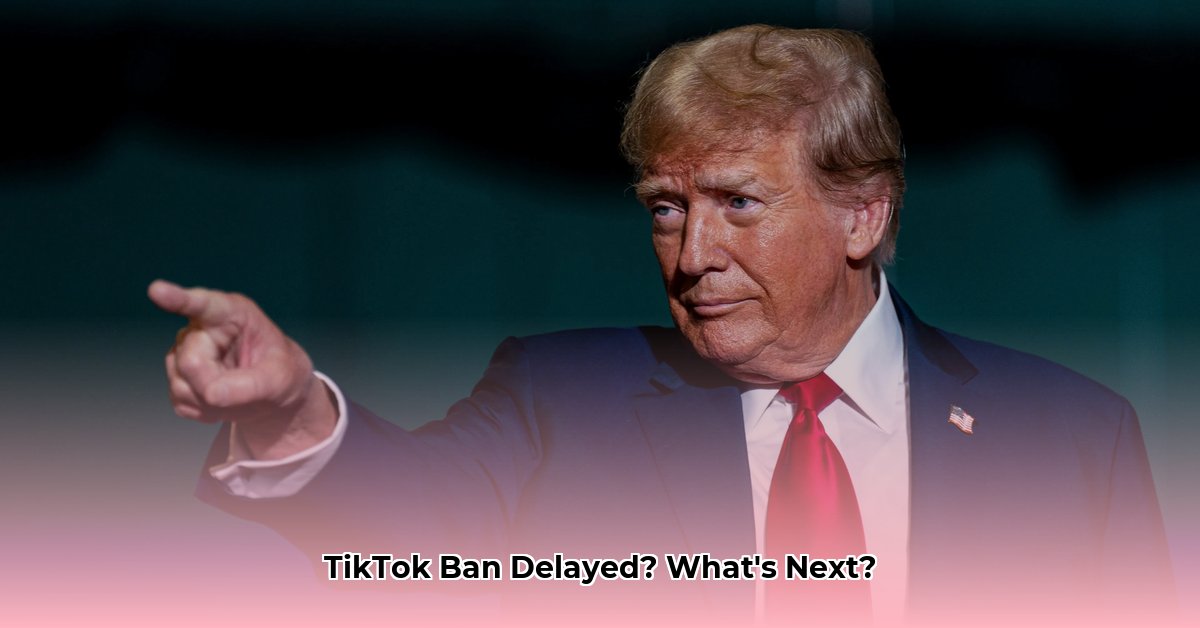President Trump granted TikTok a last-minute reprieve, delaying a potential nationwide ban just before his inauguration. This unexpected reversal raises questions about the popular video-sharing app’s future and the evolving relationship between the U.S. and China.
Timeline of the TikTok Ban Saga
A bipartisan law, upheld by the Supreme Court, mandated that TikTok be sold to a U.S. company or face removal from app stores. This led to a brief period where TikTok was unavailable in the U.S. However, President Trump intervened, announcing a delay and postponing the ban’s enforcement.
Here’s a timeline of key events:
| Date | Event |
|---|---|
| Before Jan 17, 2025 | Congress passes a law requiring TikTok’s sale or ban. |
| Before Jan 17, 2025 | The Supreme Court upholds the law passed by Congress. |
| January 17, 2025 | TikTok briefly becomes unavailable in the US. |
| January 17, 2025 | President Trump announces a delay to the TikTok ban. |
| January 18, 2025 | President Trump is expected to sign an executive order formalizing the delay. |
The Executive Order: A Temporary Reprieve?
Trump’s proposed solution involves an executive order, granting ByteDance, TikTok’s parent company, up to 90 days to negotiate a sale. This delay, while offering a temporary reprieve, leaves several questions unanswered. Will this be sufficient time to reach a deal? And is a complete sale the only acceptable outcome? Trump also suggested the possibility of a joint venture with a U.S. company, a move that sparked controversy among lawmakers who insisted on a full divestiture.
Data Privacy and National Security: The Core Concerns
The controversy centers on concerns about user data and the potential for the Chinese government to access information collected by the app. These anxieties stem from Chinese laws requiring companies to cooperate with intelligence agencies. Whether a joint venture or full sale adequately addresses these concerns remains a key point of contention.
Congressional Pushback and Legal Questions
Congress expressed concerns over Trump’s approach, emphasizing the need for ByteDance to fully comply with the law and divest its ownership. Key figures, including Speaker Johnson and Senators Cotton and Ricketts, publicly questioned Trump’s decision to delay the ban without a confirmed sale. Their statements highlighted the legal complexities and potential challenges to the executive order’s authority.
Implications and Uncertainties
The TikTok ban delay creates significant uncertainty. The app’s fate in the U.S. remains unclear, dependent on the outcome of negotiations and legal challenges. Key questions include:
- Will a deal be reached within the 90-day window?
- Will any agreement satisfy U.S. lawmakers and address their security concerns?
- What impact will this have on TikTok’s millions of U.S. users?
Expert Analysis and Multiple Perspectives
Analysts offer differing views. Some suggest a joint venture might be a viable solution, allowing TikTok to operate while mitigating data privacy risks. Others remain skeptical, believing any connection to a Chinese company poses an unacceptable threat. Cybersecurity specialists emphasize the need for rigorous audits and oversight, regardless of the final ownership structure. The adequacy of the 90-day extension for negotiating such a complex deal, given the U.S.-China political climate, is also debated.
The Bigger Picture: Tech Regulation and U.S.-China Relations
The TikTok situation highlights broader issues:
- Data security and regulation of global tech companies: The case underscores the challenges of balancing national security with the global nature of the digital economy.
- Strained U.S.-China relations: Technology frequently becomes a point of contention between the two nations.
- Precedent for future regulation: The outcome may significantly impact other international tech companies operating in the U.S., especially those from countries with differing data privacy laws.
The future of TikTok in the U.S. depends on a complex interplay of legal, political, and economic factors. While the 90-day extension provides a window of opportunity, the ultimate outcome remains uncertain. This evolving situation requires continuous monitoring and analysis.







